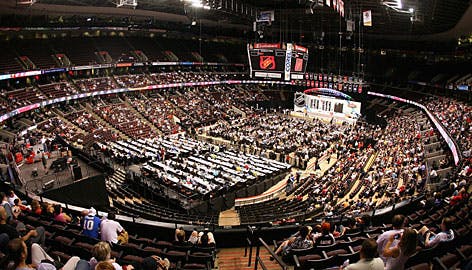Where Do The Flames Sit Heading Into the Summer?
By Ryan Pike
10 years ago
Following the completion of the season, Flames general manager Jay Feaster (and several players) expressed that their team is in a decent good place going forward.
They’re not entirely wrong. While the team on the ice is what it is – there are a lot of holes – but the club does have a bounty of resources at their disposal heading into the summer. A look at how the Flames sit compared to their counterparts in three areas can give a glimpse as to how the club sits, and who may be ideal trade partners going forward.
DRAFT PICKS

The Flames have nine picks in the 2013 NHL Draft. That’s three firsts (their own, Pittsburgh’s and St. Louis’), a third, a fourth, Columbus’ fifth, a sixth and two sevenths (their own and Ottawa’s). That’s a lot of picks.
Only five teams have more: Buffalo, Dallas, Los Angeles, Nashville and Winnipeg. The Kings don’t have a first, while Buffalo has two of them. If you’re interested in picks in the first three rounds, Buffalo has five, Dallas has three, the Kings have two, Nashville has two and Winnipeg has six. Calgary has four.
On the other end of the scheme, New Jersey and the New York Rangers have four draft picks apiece, while Anaheim, Carolina and Chicago only have five. And the Rangers and Penguins have zero picks in the first two rounds between them.
This is the first time in franchise history the Flames have had three picks in round one. It will be interesting to see if they use all three or deploy some of them as trade assets in order to move up, add more picks later or trade for a roster player.
NHL CONTRACTS

If you have a lot of NHL deals for 2013-14 already, it’ll be hard to do anything over the summer. If you have very few, you have flexibility. The maximum is 50.
The Flames have 30 players under contracts for 2013-14, with another 13 guys being restricted free agents. A good bet is only about half those guys will actually be retained by the organization. The only teams with fewer committed deals for next season are Winnipeg (19), St. Louis (26), Columbus (28), New Jersey (28) and Florida (29).
Teams who may be looking to unload bodies? Philadelphia (41), Detroit (40), Boston (39), Ottawa (39), Dallas (38) and the Rangers (38).
CAP SPACE
Here’s where things get hairy for most of the league, as the NHL’s salary cap is dropping to $64.3 million next season. Presuming that Miikka Kiprusoff doesn’t retire, the Flames have roughly $19 million in cap space. If he retires or the team buys him out, that number swells to just under $25 million. If that’s the case, only the Islanders ($29.7 million) and Winnipeg ($29.3 million) would have more cap space, although the Flames undoubtedly have more actual budget room in terms of real dollars to spend than either of those clubs. In effect, the Flames would have the fattest wallets in the league heading into the summer.
Teams that are nervous include the Flyers ($70.7 million), Montreal ($65.7 million), Vancouver ($64.4 million), Anaheim ($63.4 million), Chicago ($62.6 million) and Tampa Bay ($60.9 million). There’s another handful of teams that are just below them (Washington, Boston, Carolina, Pittsburgh) and have a lot of money spent but have some holes in their NHL rosters for next year (and some key bodies left to re-sign).
This obvsiously positions the Flames well to take advantage of some desperate clubs looking to shed some dollars. Calgary may be able to strip a useful player or two out of the cap crunched in the league, or, alternatively, trade cap space for salary dumps in return for some useful futures (prospects or picks).
Conclusion
The Flames are entering the off-season with an unprecedented amount of first round picks and financial flexibility. Although the team on paper is underwhelming, Flames management is at least positioned to set the club on the right path as they take their first few steps for the rebuild.
Recent articles from Ryan Pike





